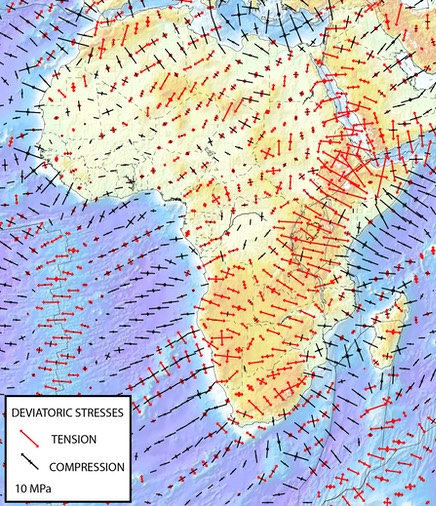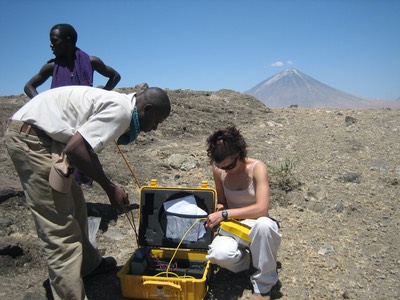Understanding the dynamics of plate motions remains a key challenge in geosciences. It is well established that plate motions are controlled by the dynamic balance of torques due to (1) convective motions within Earth's viscous mantle — often referred to as basal drag; (2) plate-boundary forces, such as the net pull of slabs descending into the mantle and the frictional resistance along the brittle interfaces between adjacent plates; and (3) deviatoric stresses arising from lateral gradients of gravitational potential energy (GPE) in the lithosphere. Plate kinematics for the present and the past are now accurately inferred from a wealth of paleomagnetic and geodetic observations, but we still lack a comprehensive understanding of the relative importance of the tectonic forces that drive/resist plate motions.
In this context, one of the long-standing questions is whether shear tractions exerted by the convecting viscous mantle at the lithosphere base drive or rather resist plate motions. Richardson et al. (1979) showed that observations of intraplate stress directions favour the latter scenario. More recently, however, Bird (1998) found that torques associated with basal shear stresses can be larger than those generated by lithospheric gradients of GPE and may therefore act to drive plate motions. It is plausible that the degree to which mantle flow promotes or resists plate motions varies geographically and through geological time.

We have used two complementary approaches to address this issue. In the first one we solve the depth averaged 3-D force balance equations for deviatoric stress associated with gravitational potential energy and use GPS strain rates to invert for a stress boundary condition that we interpret as originating from large-scale mantle tractions [Stamps et al., 2014a]. In the second one we use a global finite element model of lithospheric deformation coupled to published mantle flow scenarios to find the one that best fits geodetic observations of the Nubia-Somalia plate divergence [Stamps et al., 2014b]. In both cases we find that the contribution from GPE gradients alone is sufficient to drive Nubia-Somalia divergence and that additional forcing from horizontal mantle tractions lead to an overestimation of surface kinematics. We conclude that shear tractions from diverging mantle flow play a minor role in present-day Nubia-Somalia divergence.
Preferred dynamic velocity model for the East African Rift and the Somalian plate (w.r.t. a Nubia-fixed frame) with no contribution from horizontal mantle tractions [Stamps et al., 2014a].
